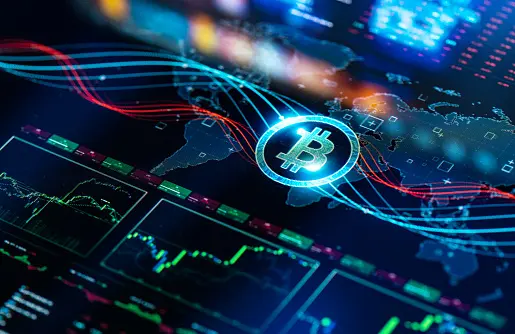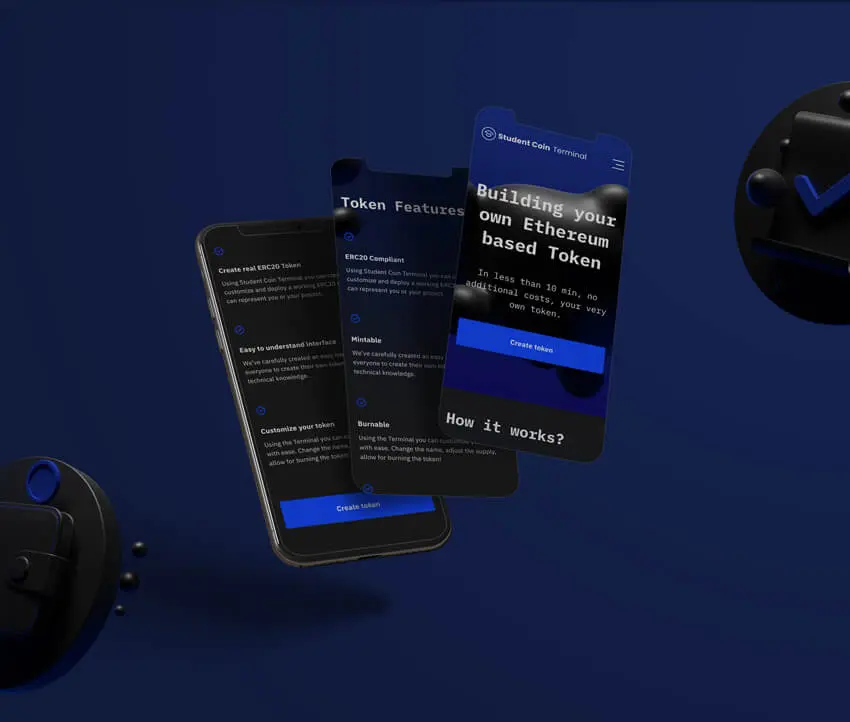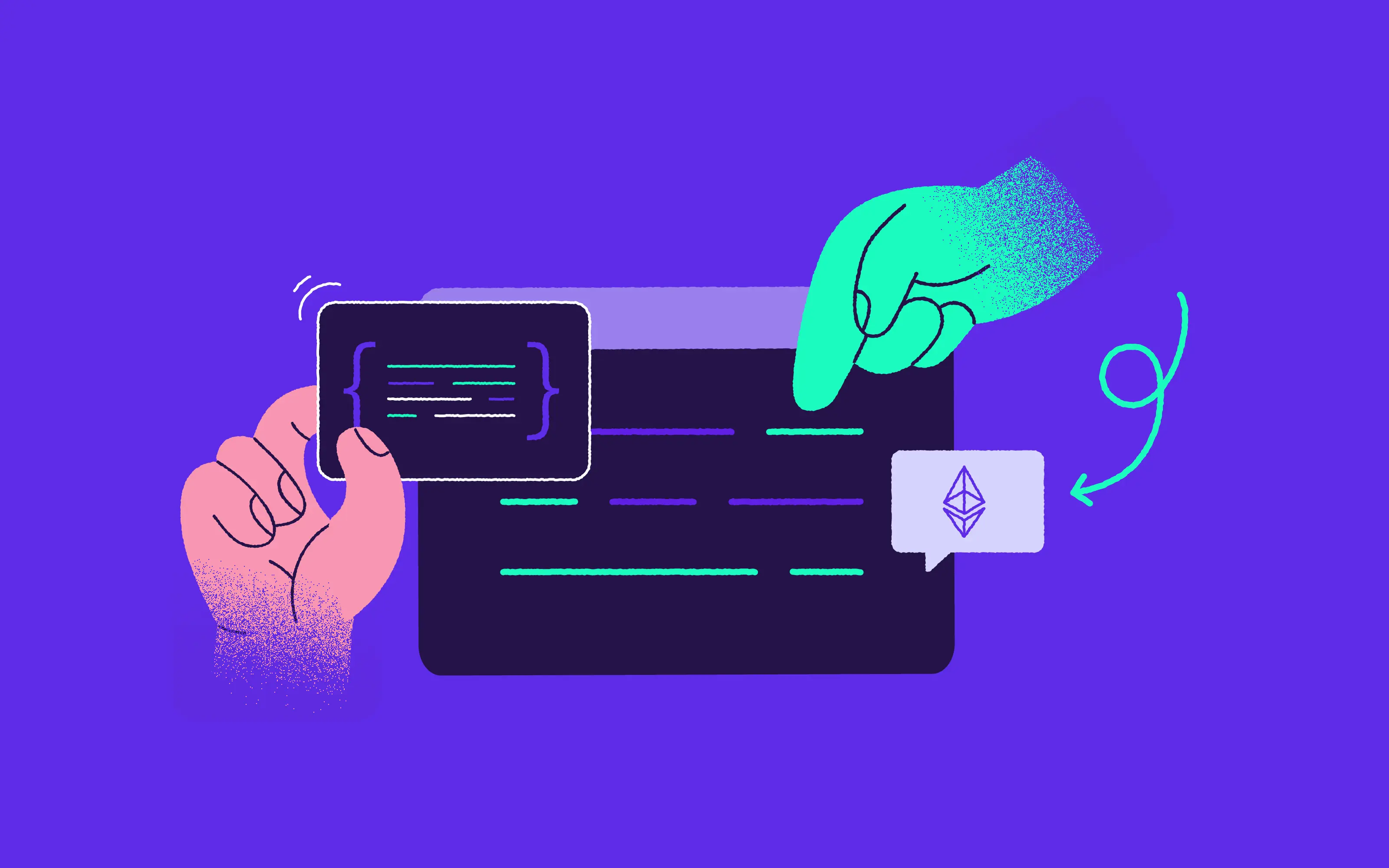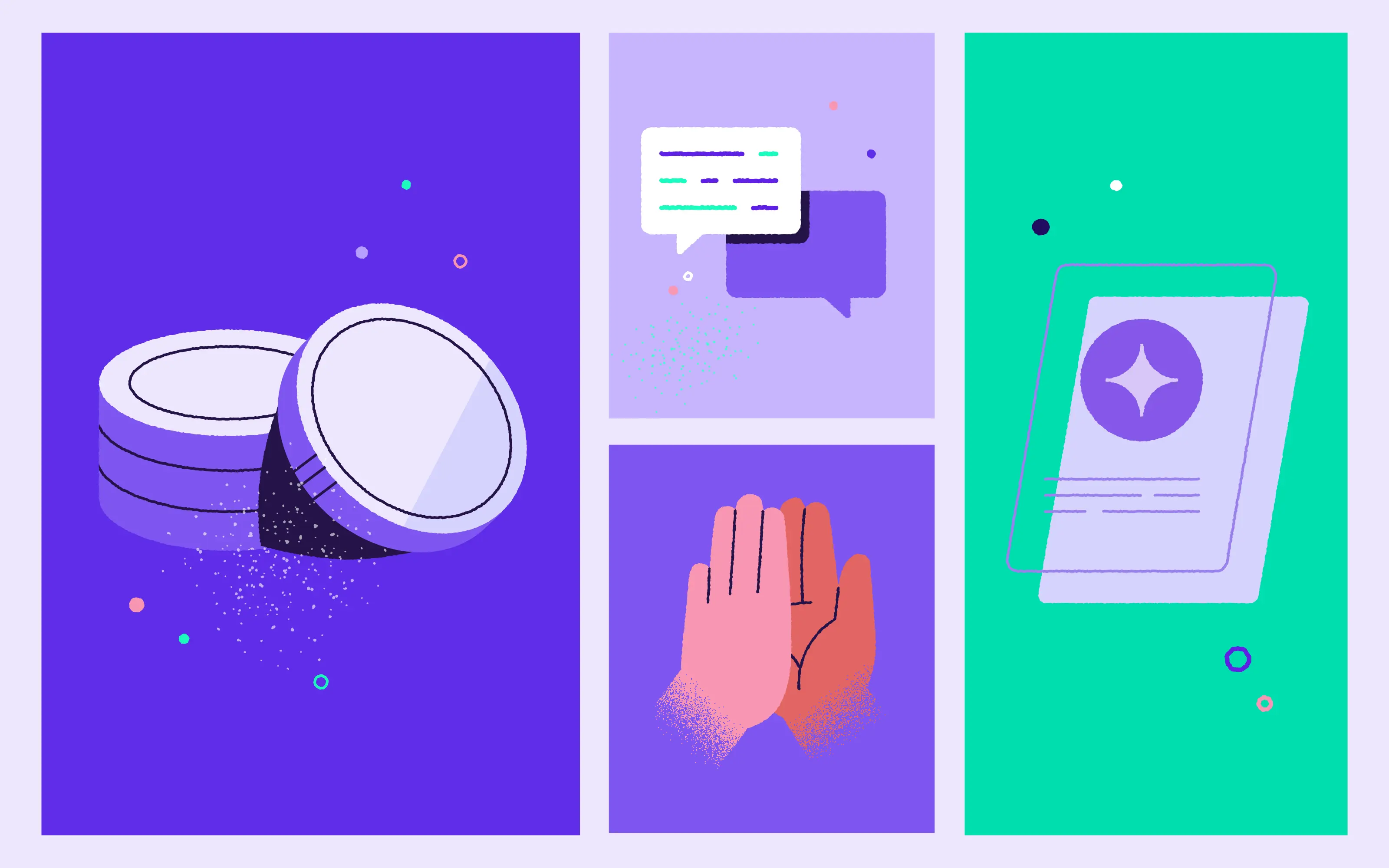
According to a recent report from DApp Radar, 2021 was perhaps the most critical year for decentralized applications (DApps) so far. The number of wallets interacting with DApps, and the trading volumes reached their highest ever peak. Games, NFTs, and DeFi (which are considered the industry’s three main categories), all saw an upward trend, and look to be in an excellent place to continue gaining momentum in 2022.
With all of the hype and popularity surrounding decentralized applications, many product owners are looking to develop their own. But there is often confusion around whether a DApp is suited to a given product. So in this blog post our goal is to go back to basics. We’ll cover what a DApp is and how it differs from a regular app and we’ll go through some key benefits, as well as things to watch out for. We’ll also show you how 10Clouds can guide you through DApp development.
What is a DApp?
A DApp, or a decentralized application, is an application built on a decentralized network that combines a smart contract and a frontend user interface.
As DApps are decentralized, they are free from the control and interference of a single authority. DApps have been developed for a range of different sectors and uses, including gaming, finance, and social media.

How does a DApp differ from a regular app?
There are several key differences between decentralized applications and traditional apps:
Centralized Vs Decentralized
As mentioned above, where a traditional app runs on a single network of computers, DApps are run on top of a decentralized, peer-to-peer network, of which no single entity has complete control.
Differing levels of User Trust
Decentralized applications give the user control and ownership of their data and assets, which means that arguably they are more trusted than traditional apps, where user data is stored centrally.
Differences in Speed
DApps are comparatively slower than traditional apps. At the moment, according to Blockchain developers, such apps can process only around 15 transactions per second. However, with the boom that the industry is currently experiencing, this is likely to very swiftly change.
Differences in Security
DApps are definitely more secure than regular apps. For a start, as they are decentralized, the records stored within them cannot be altered. While the wallet addresses of users and their interactions are stored during use and can be seen by everyone, they are secured.
Differing Costs of Development
When you’re developing a regular app, you have to take into account Cloud server fees, maintenance costs and a range of other pricing elements. This is not the case for DApps, where product owners know that the cost includes development, deployment and upgrade all in one.

The classification of decentralized apps
There are currently three recognised types of DApps:
Type 1
These DApps have their own blockchain, such as DogeCoin or BitCoin.
Type 2
These use the blockchains of the DApps outlined in Type 1, but are defined as protocols and have tokens needed for them to function. A good example of this is the Omni protocol which facilitates the creation and use of smart properties and user currencies as well as other types of smart contracts. OMNIs serve as binding between bitcoins (BTC), smart properties and smart contracts created on top of the Omni Protocol.
Type 3
Type 3 DApps use Type 2 protocols. Following on with the Omni example outlined above, let’s take the SAFE Network as an example of a Type 3 application. The SAFE Network is the world's first autonomous data network, its mission is to protect everyone's data and ensure that it stays online forever. It enables the creation of censorship-resistant websites and applications. It leverages the Omni Protocol to issue SAFEcoins.

The Importance of Smart Contracts in DApps
Smart Contracts form a key part of every DApp. A smart contract is a self-executing contract on a blockchain network.
The terms of the agreement between the buyer and the seller are directly written into lines of code. The code and the agreements contained within it exist across a distributed and decentralized blockchain network. It’s important to note that all transactions are trackable and irreversible. Smart contracts save time and conflict; and they are cheaper, faster and more secure than traditional payment systems.
If you’d like to find out more about how to write smart contracts and about blockchain networks in general, you can do so here.
What are the benefits of DApps?
Some of the key benefits of decentralized apps are already mentioned in the above differences between DApps and centralized apps. Still, it’s worth summarizing them all:
Less downtime
As DApps don’t require connectivity to centralized servers to run, they are much more robust and flexible. This means that companies can ensure minimal interruptions and downtime. Also, once smart contracts have been deployed on the blockchain, the network as a whole will be able to serve clients looking to interact with the contract. This means that hackers can’t launch attacks targeted at individual DApps.
Safer and more transparent data
As DApps are on a public blockchain, user information cannot be hidden, which means greater transparency. Also, once information is added to the blockchain, it’s stored forever, meaning that DApps are resistant to modification.
Resistance to censorship
No individual actor on the network can block users from submitting transactions, reading data from the blockchain or submitting their app. In effect, this means that DApps are resistant to censorship.
Verifiable actions
A smart contract guarantee execution in a predictable manner, which means that you don’t have to put your trust in a central authority, like you would do in a bank. This all ties in with the added trustworthiness of DApps.

What are some of the downsides of DApps?
But unfortunately DApps also have some downsides which you need to watch out for. Here are the top ones.
Difficulty of maintenance
Code published on the blockchain can be more difficult to modify than standard code. This makes DApps harder to make updates on, and therefore to maintain. It’s slightly tricker to make updates on DApps post-deployment, even when there are bugs spotted in a previous version.
Performance overheads
Scaling can be costly with DApps. As you’re looking to achieve a certain level of security, integrity and transparency, every node runs and stores every transaction. It’s been estimated that DApp overheads can stand at around 1,000,000x that of standard computation. However, with the fast pace of development in the field, this number is likely to drop with time.
User experience
Trying to create a user experience that truly rivals traditional apps is still tricky (although not impossible). It’s particularly problematic when you’re trying to appeal to new market joiners, as they need to be equipped with a tool stack that will enable them to effectively interact with the blockchain. They need very effective UX writing within an engaging user interface that will guide them through the process.
Network congestion
This is troublesome. As things stand, when one DApp uses too many computational resources, it causes backups in the entire network. Again, this may be something that will be resolved in the not too distant future, but currently there are still a number of situations where the pool of unconfirmed transactions quickly spiral out of control due to congestion.
_____________________________________________________________________________________________________
A DApp Example - Emergent
We recently worked with Emergent, a company working on creating a gold-backed stable coin and a verified supply chain for trusted gold. 10Clouds helped Emergent with extending it’s blockchain and mobile teams and worked on core elements of it’s wallet application.
We're excited to continue working with Emergent as it grows - we're currently overseeing the architecture; managing, monitoring and improving the infrastructure; handling the choice and the implementation of third party integrations; developing new features within the mobile and web applications and deploying new changes to the production environment.
You can read more about Emergent here.

_____________________________________________________________________________________________________
How 10Clouds can guide you through DApp development
At 10Clouds, we pride ourselves on hiring product delivery manager (PDM), who are with you at every step of the DApp development process, from idea to implementation. Here are the key steps of the process that we would go through to guide you through your DApp development journey.
1. Establishing the user problem that you’re solving
You might also think of this as the use case of your DApp. It’s important to brainstorm the customer pain points that you’ve identified and to really figure out whether a DApp is likely to be the best solution. Here’s where our team of skilled PDMs and blockchain developers will play a key role in helping you to understand whether a DApp, or a traditional app is the best solution.
2. Workshopping and discussion
Our team conducts blockchain workshops and live webinars to help you better understand blockchain technology. We demonstrate how the blockchain can help you scale your solution and disrupt the industry. In this workshop, we also help you create/extend your roadmap according to the requirements and potential of the solution. We help you to estimate the timeline of the project development phase-wise.
3. Selecting the right blockchain stack
We study and analyze your solution and requirements and help you choose the right technological stack for your application development. There are many blockchain stacks available in the market. We help you figure out which one is best suited to your product.
4. Building your Proof-of-Concept (POC)
Our team creates a Proof of Concept (POC) to demonstrate the practical potential of your blockchain project in a short period. The POC helps you understand how your DApp will work. It helps you to enhance your solution before the actual development phase starts.
5: Project development
Once you understand the feasibility of your solution, you can move your project to the complete development phase. We help you build the blockchain product from scratch, starting from UI/UX through front-end and back-end development, all the way through to smart contract implementation. So, you have everything covered with 10Clouds.




